- Discover the Fascination of Juniper
- Introduction
- Unique Features
- Popular Juniper Species
- Care and Maintenance
- Conclusion
- Dive into the World of Stylish Juniper
- 1. Different Species
- 2. Unique Features
- 3. Uses in Landscaping
- 4. Care Tips
- Unveil the Beauty of Various Juniper Species
- 1. Juniperus scopulorum (Rocky Mountain Juniper)
- 2. Juniperus communis (Common Juniper)
- 3. Juniperus chinensis (Chinese Juniper)
- 4. Juniperus horizontalis (Creeping Juniper)
- Get to Know the Distinctive Characteristics of Juniper Trees
- Eastern Red Cedar (Juniperus virginiana)
- Creeping Juniper (Juniperus horizontalis)
- Chinese Juniper (Juniperus chinensis)
- Explore the Versatility of Juniper Shrubs
- 1. Groundcover
- 2. Privacy Screen
- 3. Topiary
- 4. Erosion Control
- 5. Container Gardening
- Delve into the Secrets of Juniper Berries
- 1. Medicinal Properties
- 2. Culinary Uses
- 3. Distilling Gin
- 4. Symbolic Significance
- 5. Unique Flavor Profile
- 6. Potential Side Effects
- Understand the Unique Attributes of Juniper Foliage
- 1. Needle-Like Leaves
- 2. Scale-Like Leaves
- 3. Aromatic Scent
- 4. Evergreen Nature
- 5. Drought Tolerance
- 6. Varied Texture
- 7. Low Maintenance
- Discover the Surprising Benefits of Juniper Essential Oil
- 1. Soothes respiratory issues
- 2. Relieves muscle and joint pain
- 3. Supports healthy digestion
- 4. Boosts skin health
- 5. Enhances mental well-being
- 6. Acts as a natural diuretic
- 7. Fights against bacterial and fungal infections
- 8. Supports overall well-being
- Experience the Enchanting Juniper Scent in Different Products
- 1. Perfumes and Fragrances
- 2. Aromatherapy Products
- 3. Bath and Body Products
- 4. Cleaning and Household Products
- 5. Culinary Delights
- Questions and Answers:
- What are some unique features of different species of juniper?
- Which species of juniper has the most stylish foliage?
- What are some popular uses of juniper in landscaping?
- Are juniper berries edible?
- Which species of juniper is most suitable for small gardens?
- Can juniper grow in different climates?
- Videos: How to style a Juniper
Junipers are a group of evergreen shrubs and trees that belong to the cypress family. They are known for their unique and stylish appearance, making them a popular choice for landscaping and bonsai. With over 60 different species, junipers offer a wide range of features and characteristics that make each species unique.
One of the most distinctive features of junipers is their foliage. Juniper needles are usually arranged in pairs or whorls, and they vary in color from deep greens to silvers and blues. Some species have soft, feathery foliage, while others have sharp, needle-like leaves. This diversity in foliage makes junipers a versatile choice for creating different textures and patterns in garden designs.
In addition to their foliage, junipers also have unique bark that adds to their overall beauty. Some species have smooth, peeling bark in shades of red or brown, while others have rough, shaggy bark that adds a touch of rustic charm to any landscape. The bark of junipers can also vary in thickness and texture, providing even more visual interest.
Another characteristic that sets junipers apart is their fruit. Most juniper species produce small, berry-like cones that are usually bluish-black or green when young and turn brown or purplish-black when mature. These cones not only add visual interest to the tree, but they also attract birds and other wildlife, making junipers a popular choice for gardens that aim to support local biodiversity.
Whether you are a garden enthusiast or a professional landscaper, exploring the different species of juniper can be an exciting journey. Each species offers its own unique set of features that can enhance the beauty of any garden or landscape. By understanding the distinct characteristics of junipers, you can create stunning designs that reflect your personal style and appreciation for nature’s beauty.
Discover the Fascination of Juniper
Introduction
Juniper is a beautiful and stylish plant that is known for its unique features and versatility. With over 50 different species, juniper can be found in various regions around the world, adding charm to gardens, landscapes, and even indoor spaces. In this article, we will explore some of the fascinating aspects of juniper and its different species.
Unique Features
Diversity: Juniper is known for its diverse range of species, each with its own unique characteristics. From tall, narrow trees to low-growing shrubs, juniper offers a wide variety to suit different landscaping needs.
Foliage: One of the most striking features of juniper is its foliage. The leaves are typically needle-like and can vary in color from vibrant green to silver-blue or even golden-yellow. This adds an element of visual interest and contrast to any garden.
Berries: Many species of juniper produce small, berry-like fruits. These berries can range in color from blue-black to red and are often used to add a pop of color to arrangements and wreaths. Some juniper berries are also used in cooking and herbal medicine.
Popular Juniper Species
- Juniperus scopulorum (Rocky Mountain Juniper): This species of juniper is native to North America and is known for its tall, columnar shape. It has a blue-green foliage and can reach heights of up to 40 feet.
- Juniperus chinensis (Chinese Juniper): Originating from East Asia, the Chinese juniper is a popular choice for bonsai enthusiasts. It has a compact growth habit and its foliage can range from blue-green to yellow-green.
- Juniperus sabina (Savin Juniper): Native to Europe and Asia, the savin juniper is a low-growing shrub with a spreading habit. It has scale-like foliage and produces small black berries.
Care and Maintenance
Juniper is a relatively low-maintenance plant that thrives in various growing conditions. Here are some general care tips to keep in mind:
- Plant juniper in well-draining soil and in a location that receives full sun or light shade.
- Water newly planted juniper regularly until established, then reduce watering frequency.
- Prune juniper in early spring to maintain its shape and remove any dead or damaged branches.
- Apply a slow-release fertilizer in spring to promote healthy growth.
- Monitor for common pests, such as juniper scale or spider mites, and treat accordingly.
Conclusion
Juniper is an enchanting plant that offers a multitude of unique features and species. Whether you’re looking to enhance your garden or add a touch of elegance to your indoor space, juniper is sure to captivate with its beauty and charm.
Dive into the World of Stylish Juniper
Juniper is a versatile and beautiful plant that adds a touch of elegance to any landscape. With its unique features and wide range of species, there is a Juniper tree for every garden. Whether you are looking for a low-growing ground cover or a tall and majestic centerpiece, Juniper has got you covered.
1. Different Species
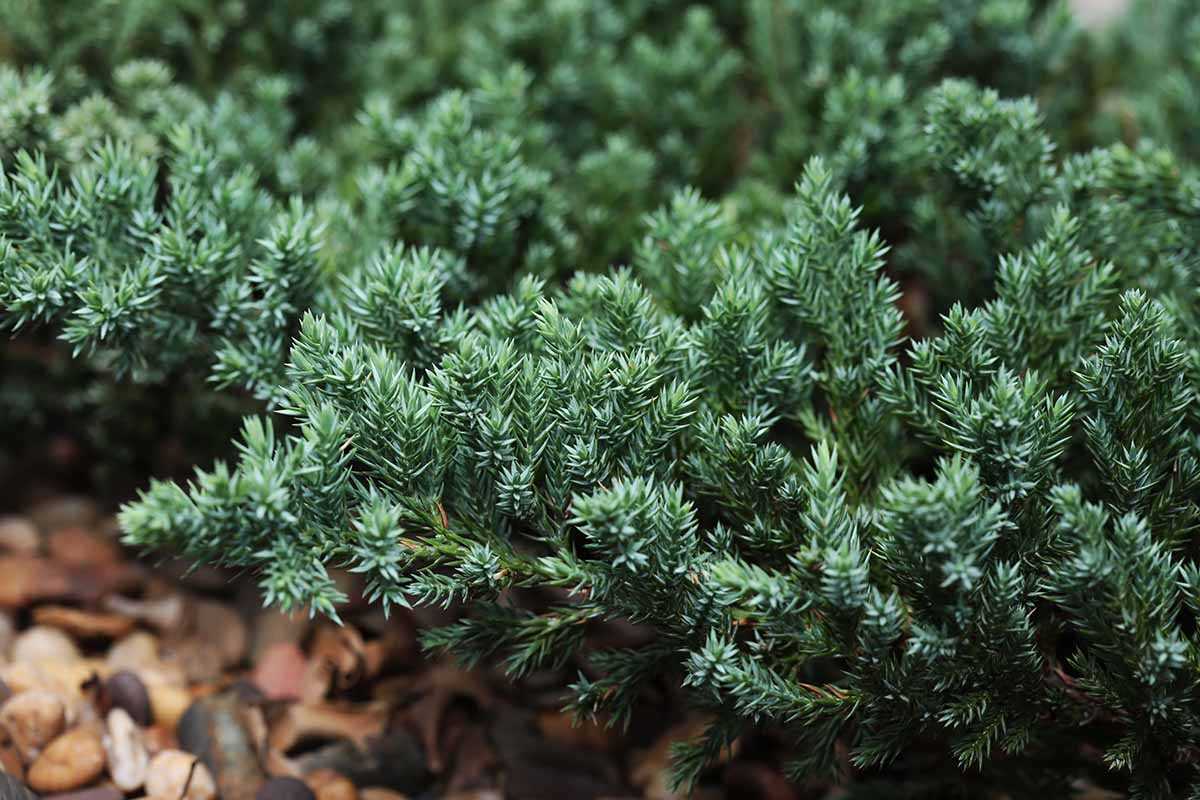
Juniper comes in various species, each with its distinctive characteristics. Some popular species include:
- Juniperus communis: This species is known for its aromatic berries and is commonly used in gin production.
- Juniperus scopulorum: Also known as Rocky Mountain Juniper, this species can reach heights of up to 40 feet and has a beautiful blue-green foliage.
- Juniperus chinensis: Native to China, this species is widely used in landscaping for its attractive scale-like foliage and unique shape.
- Juniperus sabina: This species is known for its low-growing and spreading habit, making it ideal for ground cover.
Each species offers a unique blend of color, texture, and shape, allowing you to create a diverse and visually appealing garden.
2. Unique Features
What sets Juniper apart from other plants is its unique features. Some fascinating features of Juniper include:
- Evergreen Foliage: Juniper has needle-like or scale-like foliage that remains green and vibrant throughout the year, adding color and texture to your garden even in the harshest winters.
- Drought Tolerance: Many Juniper species are highly drought-tolerant, making them an excellent choice for water-wise landscaping.
- Attractive Bark: Some Juniper species have decorative bark that adds visual interest, such as the peeling bark of the Juniperus Virginiana.
- Berries: Juniper produces small berries that range in color from blue to purple. These berries not only add visual interest but also attract birds to your garden.
3. Uses in Landscaping
Juniper is widely used in landscaping for its many benefits and versatility. Some common uses of Juniper in landscaping include:
- Privacy Hedges: Tall-growing Juniper species can be used to create natural privacy hedges, providing both privacy and beauty.
- Ground Cover: Low-growing species of Juniper are excellent for ground cover, as they help prevent soil erosion and suppress weed growth.
- Container Planting: Juniper can be grown in containers to add a touch of greenery to patios, balconies, and other small spaces.
- Bonsai: Certain Juniper species, such as Juniperus procumbens, are popular choices for bonsai due to their unique shape and adaptable nature.
4. Care Tips
To ensure your Juniper thrives, here are some care tips to keep in mind:
- Planting: Choose a well-draining location with full sun for your Juniper tree.
- Watering: Juniper is generally drought-tolerant but will benefit from occasional deep watering during dry periods.
- Pruning: Regular pruning can help maintain the shape and size of your Juniper tree and prevent it from becoming overgrown.
- Fertilizing: Juniper usually does not require much fertilization, but an application of balanced slow-release fertilizer in spring can promote healthy growth.
By understanding the unique features of different Juniper species and providing the right care, you can create a stylish and beautiful landscape that showcases the beauty of this incredible plant.
Unveil the Beauty of Various Juniper Species
Junipers are a diverse group of evergreen shrubs and trees that belong to the cypress family. With their unique features and stunning beauty, junipers have become a popular choice for landscaping and gardening purposes. Here, we will explore some of the most beautiful and stylish juniper species.
1. Juniperus scopulorum (Rocky Mountain Juniper)
The Rocky Mountain Juniper is native to western North America and is known for its twisted, gnarled branches and striking blue-green foliage. Its twisted growth habit adds to its unique charm, making it a favorite among many gardeners.
2. Juniperus communis (Common Juniper)
The Common Juniper is one of the most widely distributed juniper species. It can be found across the northern hemisphere, including North America, Europe, and Asia. It features dense, scale-like foliage that ranges in color from green to blue-gray, making it a versatile and visually appealing choice for landscaping.
3. Juniperus chinensis (Chinese Juniper)
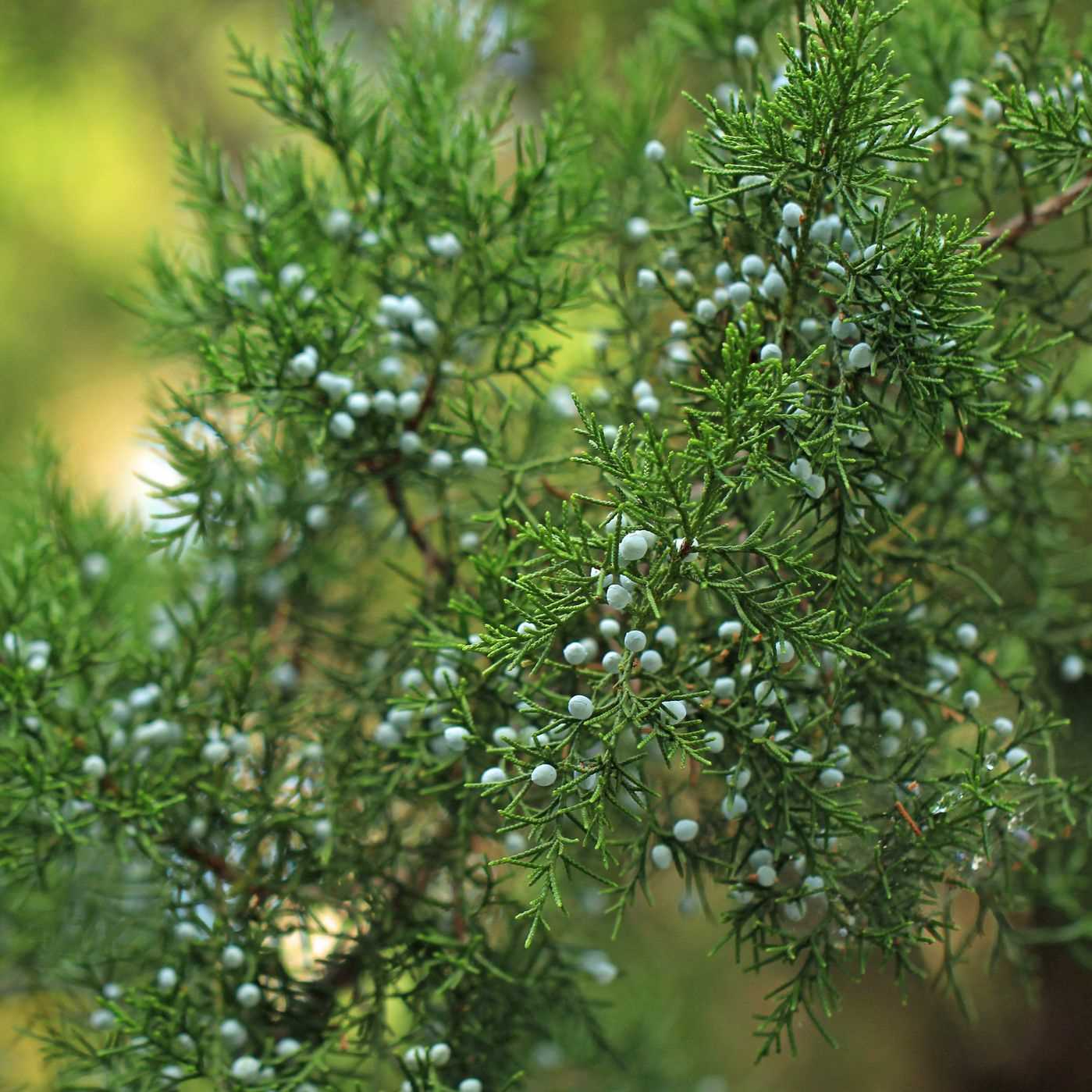
The Chinese Juniper is a popular species, known for its elegant and distinctive appearance. It has a pyramidal growth habit and dense, needle-like foliage that ranges in color from green to blue-green. With its graceful shape and attractive foliage, the Chinese Juniper is often used to create beautiful hedges and borders.
4. Juniperus horizontalis (Creeping Juniper)
The Creeping Juniper, also known as ground juniper, is a low-growing species that spreads across the ground, creating a carpet-like effect. Its horizontal growth habit and dense foliage make it an excellent choice for ground cover, erosion control, and slope stabilization. It is often used in rock gardens and cascading over walls.
These are just a few examples of the many beautiful and stylish juniper species available. Each species has its own unique features and characteristics, allowing you to add a touch of beauty and elegance to your garden or landscape design. Whether you prefer the twisted branches of the Rocky Mountain Juniper or the graceful shape of the Chinese Juniper, there is sure to be a juniper species that fits your style and preferences.
Get to Know the Distinctive Characteristics of Juniper Trees
Juniper trees are known for their unique and distinctive characteristics. They belong to the cypress family and are a popular choice for landscaping due to their versatile nature and striking appearance. Here are some of the key features that make juniper trees stand out:
- Evergreen Foliage: One of the most prominent features of juniper trees is their evergreen foliage. These trees retain their leaves throughout the year, providing a year-round green presence in the landscape.
- Needle-like Leaves: Juniper trees have needle-like leaves that are typically green or bluish-green in color. The leaves are arranged in pairs or whorls along the branches, giving the tree a unique texture.
- Attractive Bark: Another distinctive feature of juniper trees is their attractive bark. Depending on the species, the bark can range from reddish-brown to grayish-brown and may peel or exfoliate in thin strips or shreddy sheets.
- Cones: Juniper trees produce small, berry-like cones that are typically bluish or blackish in color. These cones contain the seeds of the tree and provide food for wildlife, especially birds.
Aside from these general characteristics, different species of juniper trees may have specific features that set them apart. Here are a few examples:
Eastern Red Cedar (Juniperus virginiana)
The Eastern Red Cedar, also known as Juniperus virginiana, is a native species to North America. It features dense, scaled foliage and reddish-brown bark that exfoliates in vertical strips. This species is known for its tolerance to a wide range of soil conditions and its ability to attract various birds with its berry-like cones.
Creeping Juniper (Juniperus horizontalis)
The Creeping Juniper, or Juniperus horizontalis, is a low-growing species that spreads horizontally, making it an excellent ground cover. It has unique foliage that can range from bluish to greenish, and its branches have a trailing habit. This species is often used for erosion control and in rock gardens due to its hardy nature.
Chinese Juniper (Juniperus chinensis)
The Chinese Juniper, or Juniperus chinensis, is a popular species for landscaping due to its unique growth habit and attractive foliage. It can grow in various shapes, including pyramidal, columnar, and spreading. The foliage ranges in color from green to bluish-gray, and some cultivars might have gold or yellow accents.
Overall, juniper trees are highly valued for their distinctive characteristics, which make them a great choice for various landscape designs and settings. Whether you’re looking for an evergreen tree with interesting foliage or an attractive ground cover, there is a juniper species that can meet your needs.
Explore the Versatility of Juniper Shrubs
Juniper shrubs are not only known for their beauty, but also for their versatility in landscaping. Whether you’re looking to create a focal point in your garden or add a touch of greenery to your outdoor space, juniper shrubs can be the perfect choice. Here are some ways you can use juniper shrubs in your landscape:
1. Groundcover
Juniper shrubs, particularly low-growing varieties, can be an excellent groundcover option. They spread quickly and form a dense, evergreen carpet that helps to suppress weeds. Choose a variety that is suited to your climate and the size of the area you want to cover.
2. Privacy Screen
If you’re looking to create privacy in your yard, consider using juniper shrubs as a natural screen. Their dense foliage and tall growth habit make them ideal for blocking views and creating a secluded outdoor space. Plant them in a row, leaving enough space between each shrub to allow for growth.
3. Topiary
Juniper shrubs are also popular for their ability to be shaped into various forms, such as spirals, cones, or balls. This makes them an excellent choice for creating topiaries in your garden. With proper pruning and maintenance, you can create unique and eye-catching shapes that will add a touch of elegance to your landscape.
4. Erosion Control
Thanks to their extensive root system and ability to withstand harsh conditions, certain varieties of juniper shrubs are excellent for erosion control on slopes or hillsides. Their strong roots help stabilize the soil and prevent erosion, making them a valuable addition to landscapes that are prone to erosion.
5. Container Gardening
Juniper shrubs can also be grown in containers, making them a versatile choice for small patios or balconies. Choose a compact variety that is suitable for container planting, and make sure to use well-draining soil. Container-grown juniper shrubs can add a touch of greenery to any outdoor space, no matter how small.
With their versatility and unique features, juniper shrubs can enhance any landscape. Whether you’re looking to add a pop of color, create privacy, or control erosion, juniper shrubs offer a wide range of options for your outdoor space.
Delve into the Secrets of Juniper Berries
Juniper berries are the fruit of the juniper tree, a coniferous tree that belongs to the cypress family. These small berries are known for their distinct flavor and aroma, which have made them a popular ingredient in the culinary world. But besides their culinary uses, juniper berries have many other secrets that are worth exploring.
1. Medicinal Properties
Juniper berries have long been used in traditional medicine for their potential health benefits. They contain various compounds, including antioxidants and antimicrobial agents, which can help promote overall well-being. Some potential benefits of consuming juniper berries include improved digestion, reduced inflammation, and boosted immune system.
2. Culinary Uses
As mentioned earlier, juniper berries are widely used in cooking, particularly in European cuisine. Their strong and distinct flavor adds depth and complexity to dishes, making them a popular ingredient in various recipes. Juniper berries are commonly used in pickling, marinades, and as a flavoring for meat dishes such as venison and sauerkraut.
3. Distilling Gin
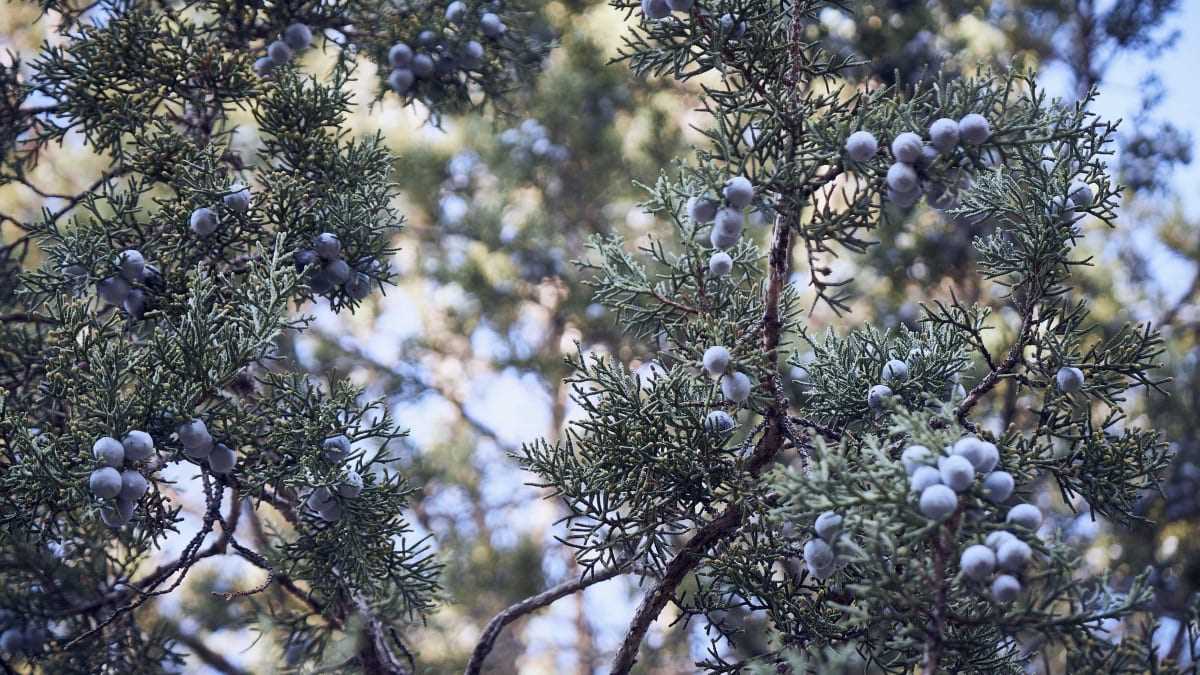
One of the most well-known uses of juniper berries is in the production of gin. Gin is a spirit that is primarily flavored with juniper berries, giving it its characteristic taste. The berries are added during the distillation process to infuse the spirit with their unique flavors. In fact, gin gets its name from the Dutch word “jenever,” which means juniper.
4. Symbolic Significance
Juniper trees and berries have held symbolic significance in various cultures throughout history. In ancient times, they were associated with purification, protection, and healing. Juniper branches were often burned to ward off evil spirits, and the berries were used in rituals and ceremonies. Even today, juniper berries are sometimes used in spiritual practices and herbal medicine.
5. Unique Flavor Profile
The flavor of juniper berries can best be described as a combination of pine and citrus with a slightly sweet and spicy undertone. This unique flavor profile adds depth and complexity to both savory and sweet dishes. It’s important to note that the flavor can vary depending on the species of juniper and the ripeness of the berries.
6. Potential Side Effects
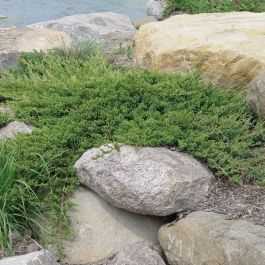
While juniper berries have many potential benefits, it’s important to consume them in moderation. Some people may be allergic to juniper berries, and excessive consumption can lead to digestive issues such as diarrhea or upset stomach. Pregnant women should also avoid consuming juniper berries as they may stimulate uterine contractions.
Overall, juniper berries are a versatile and fascinating ingredient that adds a unique flavor and aroma to various dishes. Exploring their culinary and medicinal uses can open up a world of possibilities in the kitchen and beyond.
Understand the Unique Attributes of Juniper Foliage
The foliage of juniper trees is known for its unique characteristics and features. Understanding these attributes can help you appreciate the beauty and diversity of juniper species in a better way.
1. Needle-Like Leaves
Juniper foliage consists of needle-shaped leaves that are typically green or bluish-green in color. These needle-like leaves are usually pointy and can vary in length and thickness depending on the juniper species.
2. Scale-Like Leaves
Some juniper species have scale-like leaves instead of needle-like ones. These leaves are flattened and overlap each other, giving the appearance of scales on the branches. The scale-like leaves can be green, gray, or even silver in color.
3. Aromatic Scent
Juniper foliage often emits a pleasant and distinctive aroma. When you crush or rub the leaves between your fingers, they release essential oils that create a refreshing and fragrant scent. This aromatic quality makes juniper foliage desirable for various purposes, including ornamental use and herbal remedies.
4. Evergreen Nature
Juniper foliage remains green throughout the year, making it an evergreen plant. This characteristic ensures that juniper trees provide aesthetic appeal and maintain their beauty even during the winter months when many other trees shed their leaves.
5. Drought Tolerance
The foliage of juniper trees is adapted to withstand drought conditions. Its leaves have a waxy coating that helps reduce water loss through evaporation. This adaptation enables junipers to thrive in arid environments with minimal water requirements.
6. Varied Texture
Juniper foliage can have a diverse texture, depending on the species. Some species have soft and feathery foliage, while others have coarse and stiff leaves. This variation adds visual interest to landscapes and allows for unique design opportunities in gardens.
7. Low Maintenance
Juniper foliage is relatively low maintenance, as it requires minimal pruning and care. Its resilient nature and adaptability make it an ideal choice for landscaping projects, particularly in areas where other plants struggle to thrive.
Understanding the unique attributes of juniper foliage can enhance your appreciation for these beautiful and stylish trees. Whether you’re planning a garden or simply enjoying the beauty of junipers in their natural habitat, their foliage is sure to captivate and inspire.
Discover the Surprising Benefits of Juniper Essential Oil
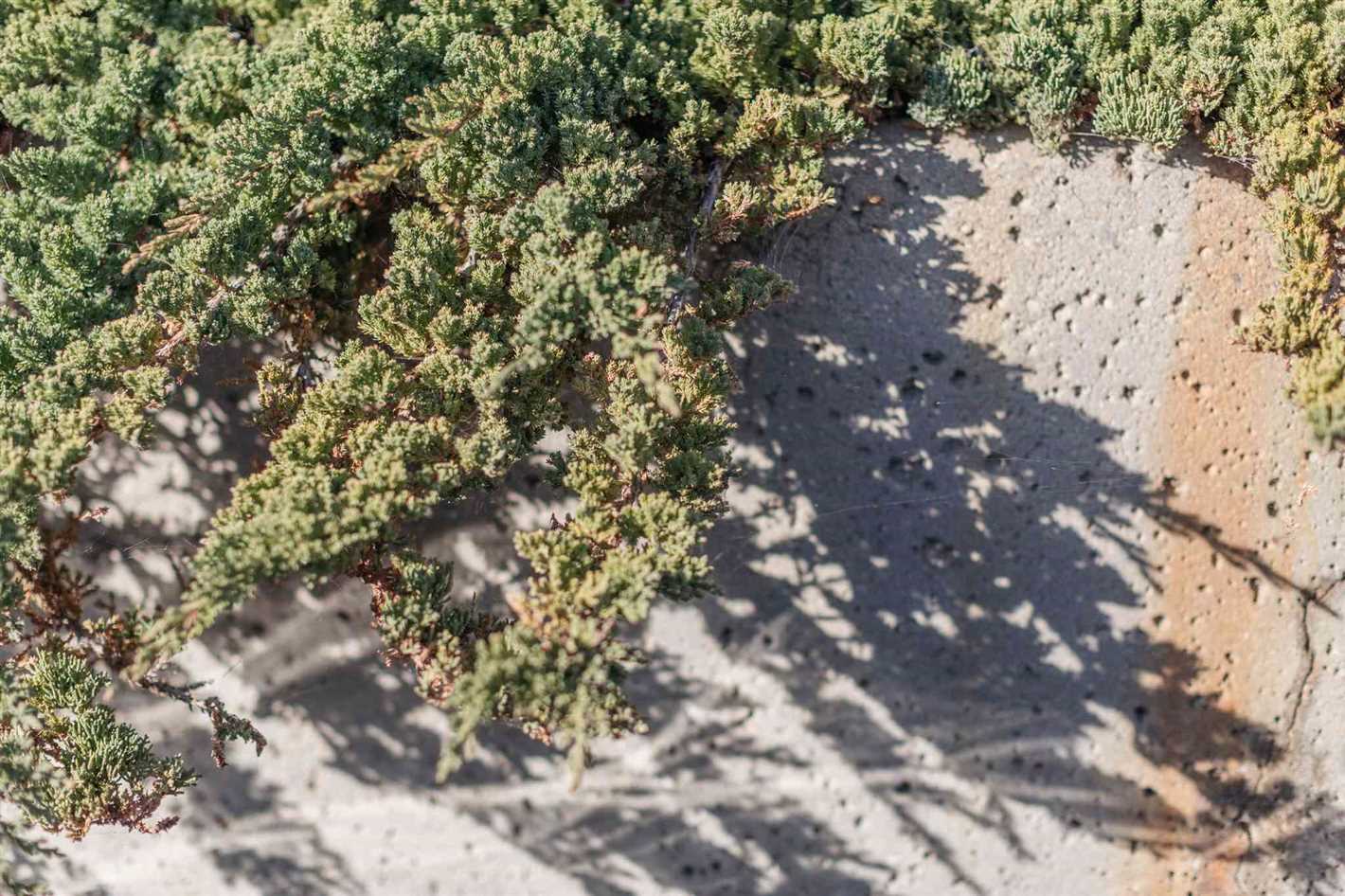
Juniper essential oil is derived from the berries of the Juniperus plant, which is a part of the cypress family. This oil has a variety of surprising benefits and is commonly used in aromatherapy due to its soothing and healing properties.
1. Soothes respiratory issues
Juniper essential oil has been traditionally used to ease respiratory conditions such as asthma, bronchitis, and congestion. Its expectorant properties help to clear mucus and phlegm from the respiratory tract, providing relief and promoting easier breathing.
2. Relieves muscle and joint pain
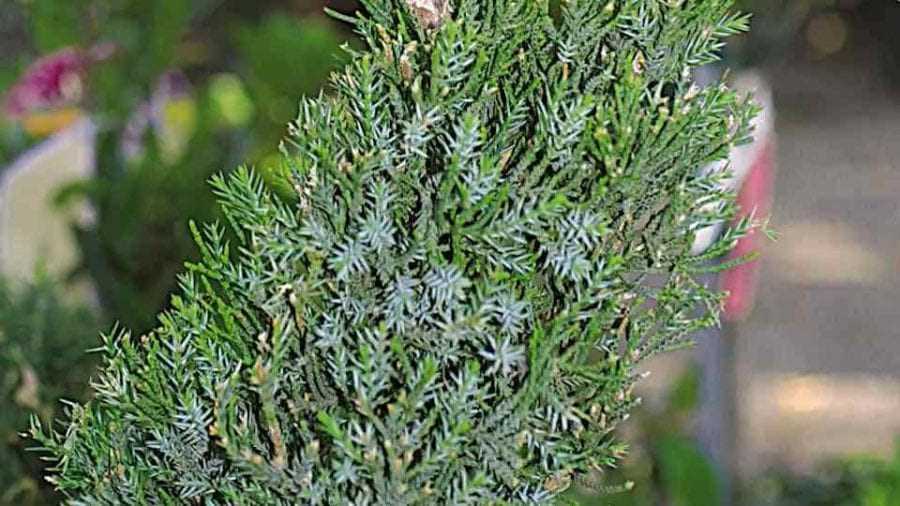
The analgesic and anti-inflammatory properties of juniper essential oil make it ideal for alleviating muscle and joint pain. Massaging the oil onto the affected areas can help to reduce inflammation, relieve muscle spasms, and ease joint stiffness.
3. Supports healthy digestion
Juniper essential oil is known to have carminative properties, which help to relieve digestive discomforts such as bloating, indigestion, and flatulence. It can also stimulate the production of digestive enzymes, promoting better digestion and nutrient absorption.
4. Boosts skin health
Thanks to its antimicrobial and astringent properties, juniper essential oil can be used to treat various skin conditions such as acne, eczema, and psoriasis. It helps to cleanse and detoxify the skin, reduce inflammation, and promote a clear, healthy complexion.
5. Enhances mental well-being
Aromatic use of juniper essential oil can have a positive impact on mental health. Its uplifting and invigorating scent helps to reduce anxiety, stress, and mental fatigue. It can also improve focus and alertness, promoting a sense of calm and balance.
6. Acts as a natural diuretic
Juniper essential oil has diuretic properties that can help to improve kidney function and promote the elimination of excess fluids from the body. This makes it beneficial for reducing water retention, bloating, and swelling.
7. Fights against bacterial and fungal infections
The antibacterial and antifungal properties of juniper essential oil make it effective in combating various types of infections. It can be used topically to treat wounds, cuts, and fungal infections, or diluted in a carrier oil for oral health purposes.
8. Supports overall well-being
Juniper essential oil has a refreshing and revitalizing aroma that can help to improve mood and promote a sense of overall well-being. Its therapeutic properties make it a valuable addition to any natural medicine cabinet.
When using juniper essential oil, it is important to dilute it properly and perform a patch test to check for any adverse reactions. Pregnant women and individuals with certain medical conditions should consult with a healthcare professional before using this oil.
Experience the Enchanting Juniper Scent in Different Products
Juniper, known for its distinct scent, is widely used in various products across industries. From perfumes to cleaning products, the enchanting aroma of juniper adds a unique touch to each item. Here are some of the products where you can experience the captivating juniper scent:
1. Perfumes and Fragrances
Juniper is a popular ingredient in perfumes and fragrances due to its refreshing and invigorating scent. The aromatic oils extracted from the juniper berries are often blended with other botanical extracts to create captivating and long-lasting fragrances. You can find a wide range of perfumes and colognes that feature the enchanting juniper scent.
2. Aromatherapy Products
In the field of aromatherapy, juniper is highly valued for its calming and stress-relieving properties. Essential oils derived from juniper are used in diffusers, massage oils, and bath products to create a soothing and serene atmosphere. The intoxicating juniper scent helps promote relaxation and balance, making it perfect for aromatherapy enthusiasts.
3. Bath and Body Products
Juniper is also used in a variety of bath and body products such as soaps, shower gels, and lotions. The aroma of juniper adds a refreshing touch to these products, making every bath or shower a delightful experience. Additionally, juniper has antibacterial properties, which can help cleanse and nourish the skin.
4. Cleaning and Household Products
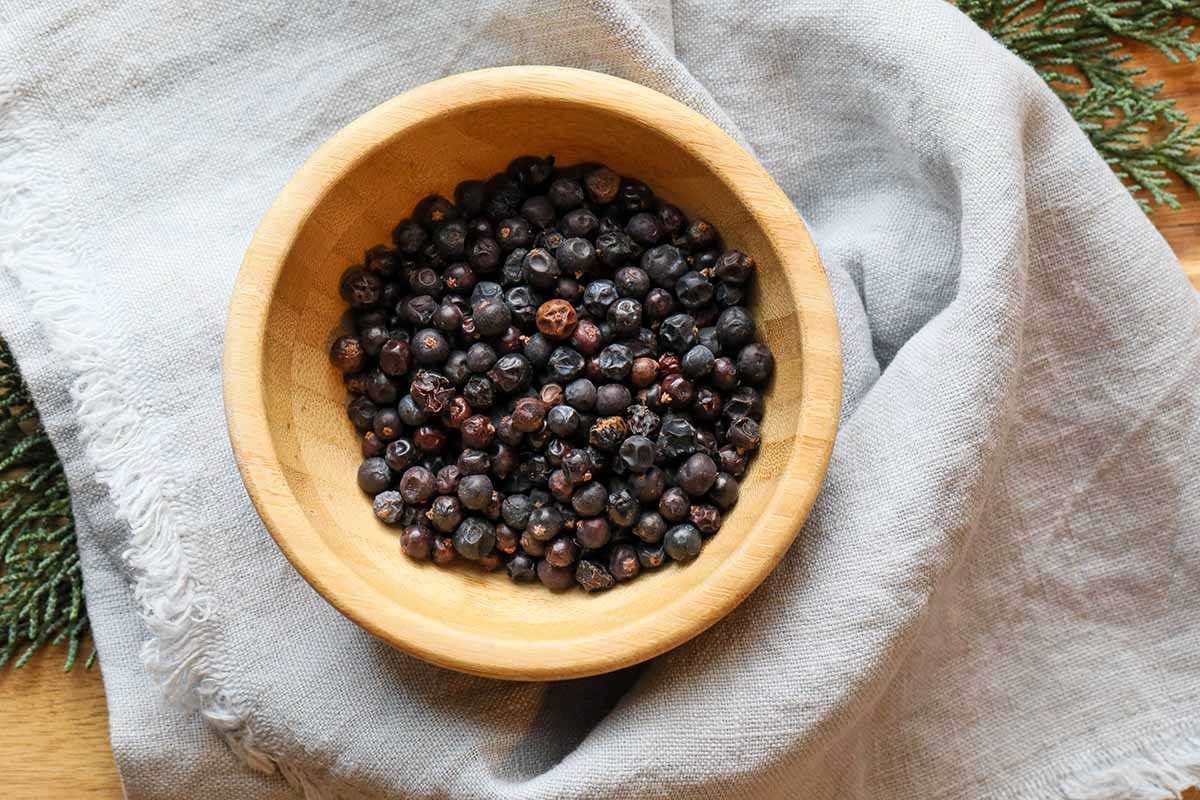
The natural antibacterial properties of juniper make it an excellent ingredient for cleaning and household products. From all-purpose cleaners to dish soaps, juniper-infused products can effectively remove dirt and grime while leaving a pleasant scent behind. Cleaning your home becomes an aromatic experience with juniper.
5. Culinary Delights
Juniper berries are also utilized in the culinary world, especially in the preparation of certain meats and stews. The berries’ distinct flavor adds a unique and earthy taste to dishes, enhancing the overall culinary experience. Juniper-infused oils and spices are highly sought after by chefs and food enthusiasts alike.
Whether you’re looking for a captivating perfume, a calming aromatherapy blend, or an aromatic cleaning product, the enchanting scent of juniper can be found in a wide range of items. Experience the beauty and allure of juniper by incorporating these products into your everyday life. Let the captivating aroma of juniper transport you to a world of sensory delight.
Questions and Answers:
What are some unique features of different species of juniper?
Some unique features of different species of juniper include the shape and color of their foliage, the size and shape of their cones, and the presence of berries.
Which species of juniper has the most stylish foliage?
It is subjective to determine which species of juniper has the most stylish foliage, as beauty is in the eye of the beholder. However, some species like Juniperus scopulorum and Juniperus chinensis are popular for their attractive and stylish foliage.
What are some popular uses of juniper in landscaping?
Juniper is commonly used in landscaping for its ability to add color, texture, and dimension to outdoor spaces. It can be used as ground cover, as a hedge or screen, or as a focal point in a garden design.
Are juniper berries edible?
Yes, juniper berries are edible and are often used as a spice in cooking. They have a unique flavor that can add depth and complexity to dishes.
Which species of juniper is most suitable for small gardens?
Juniperus squamata ‘Blue Star’ is a compact and slow-growing species of juniper that is well-suited for small gardens. It has attractive blue-green foliage and a dense, rounded form.
Can juniper grow in different climates?
Yes, juniper can grow in a variety of climates, ranging from cold and northern regions to hot and arid regions. Some species are more adaptable to certain climates than others, so it’s important to choose the right species for your specific climate.







